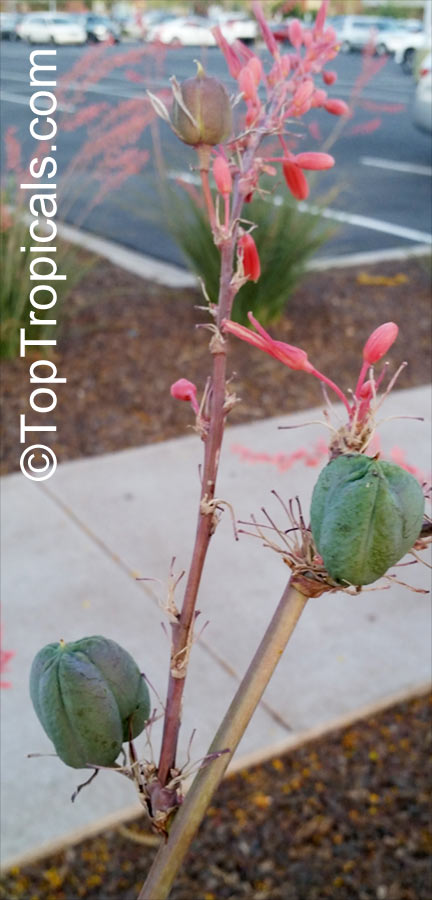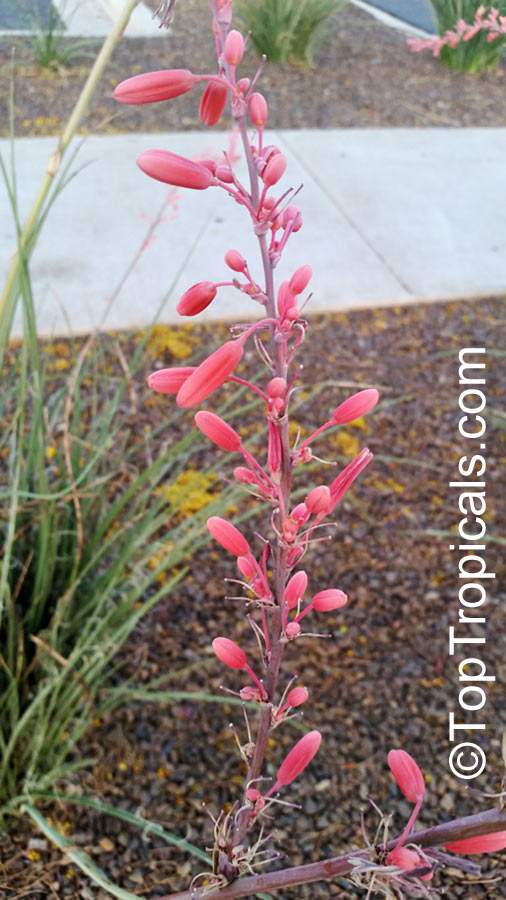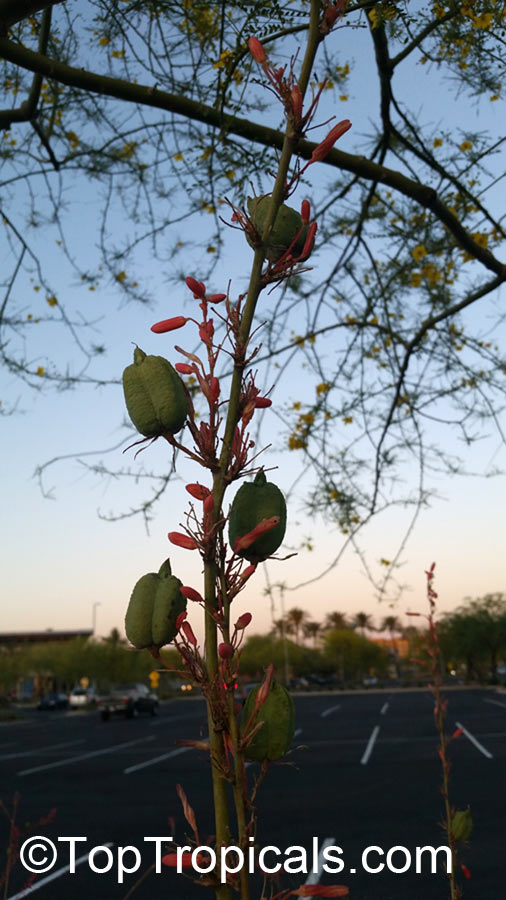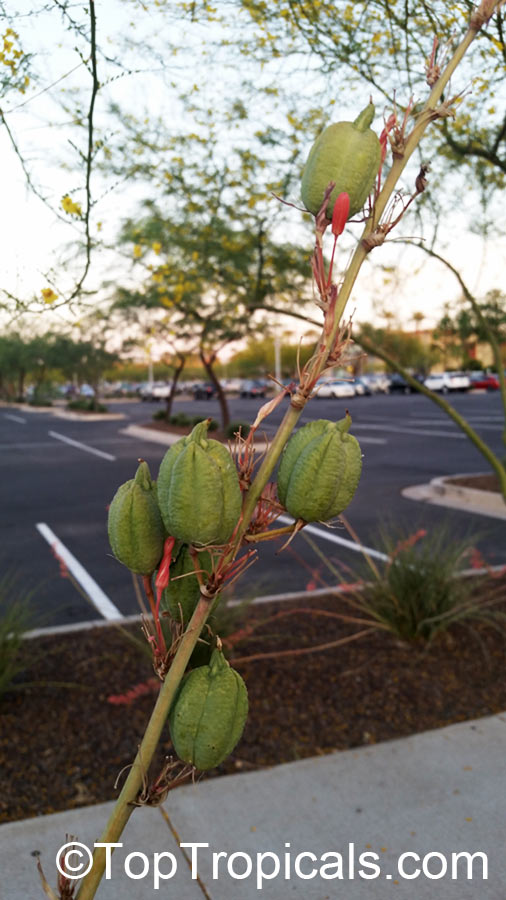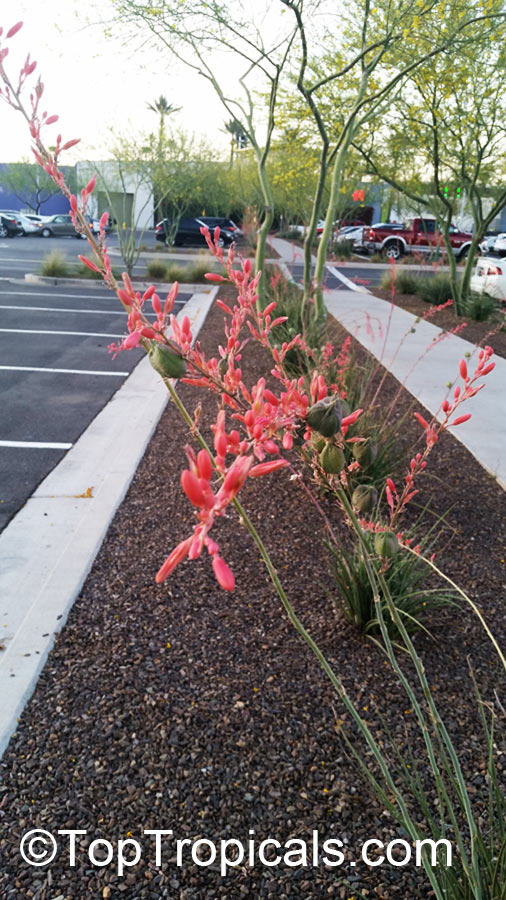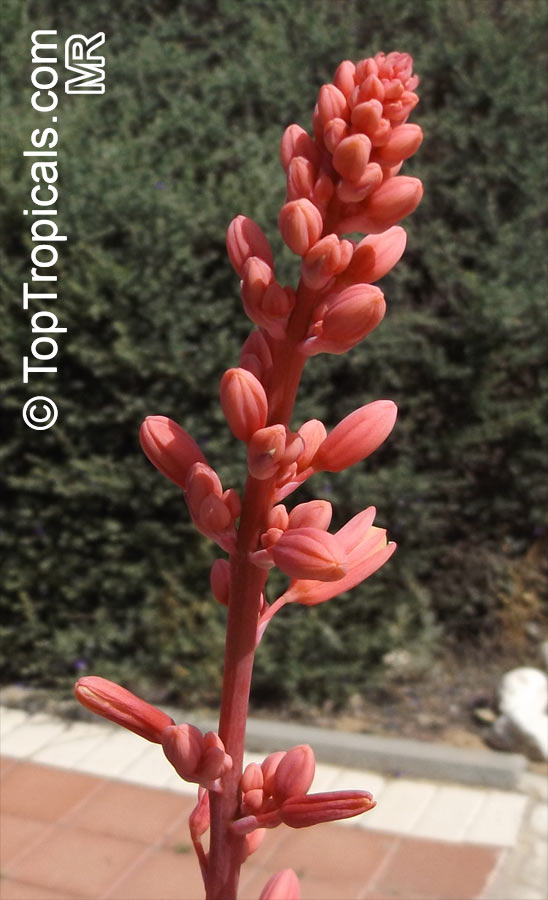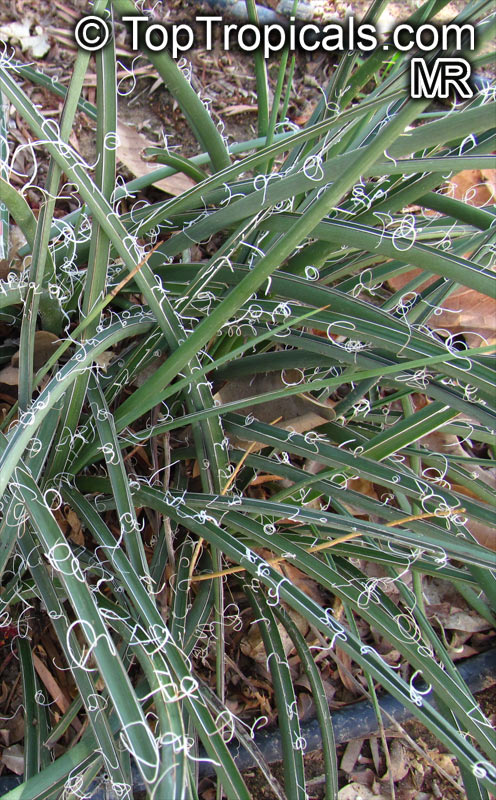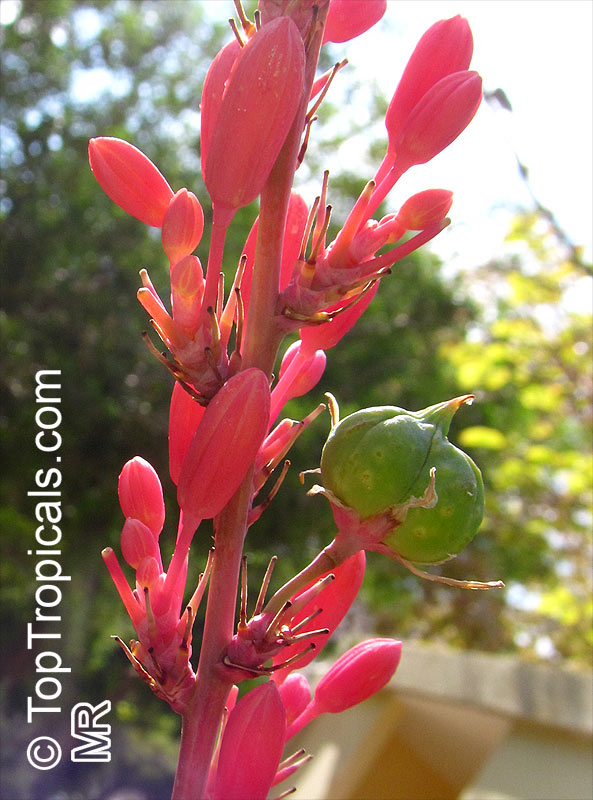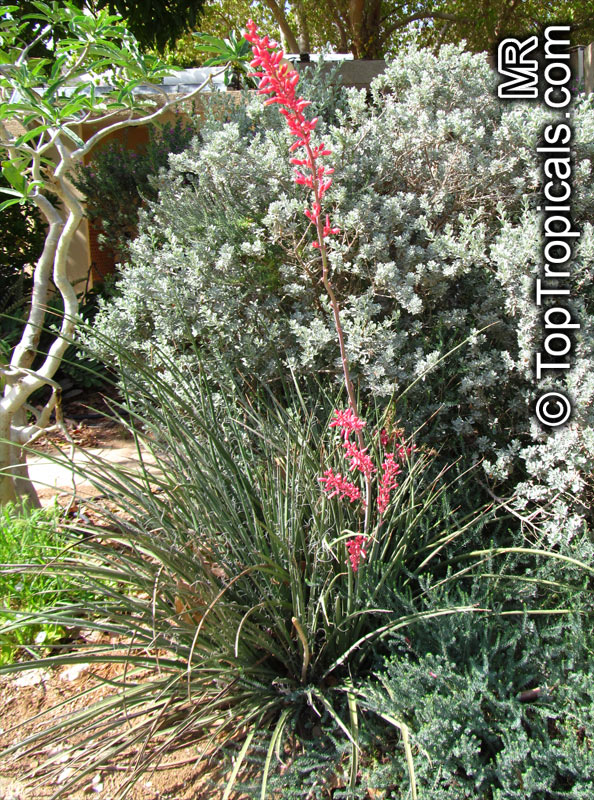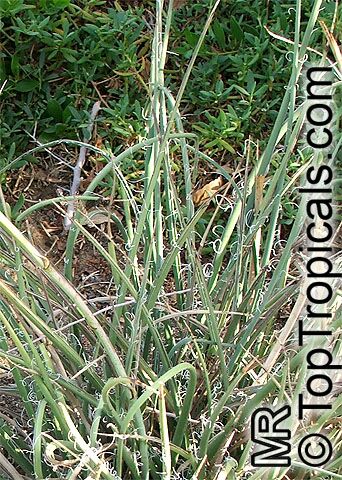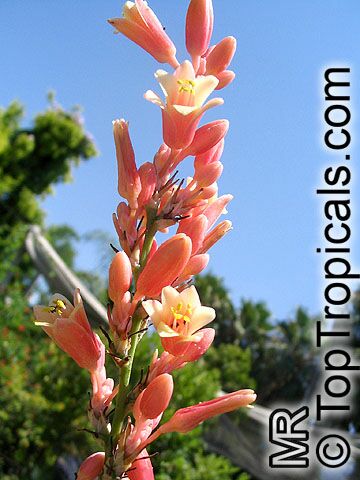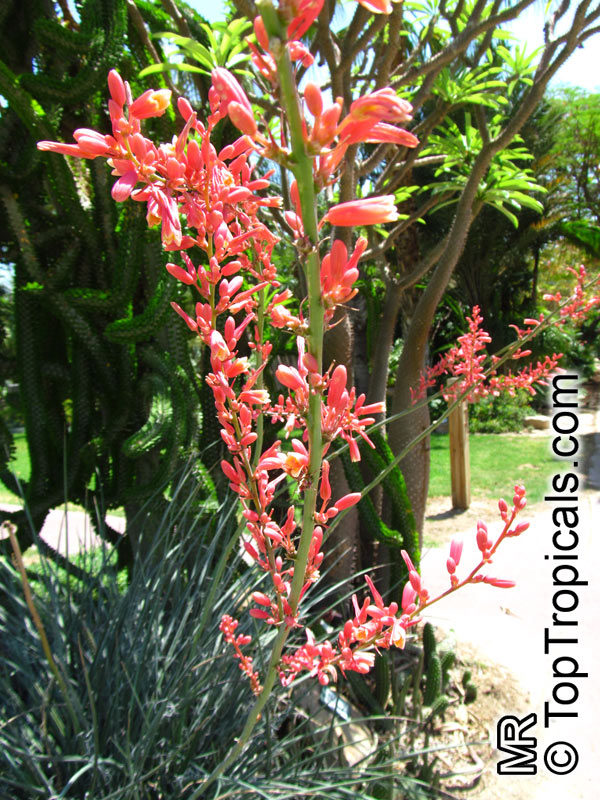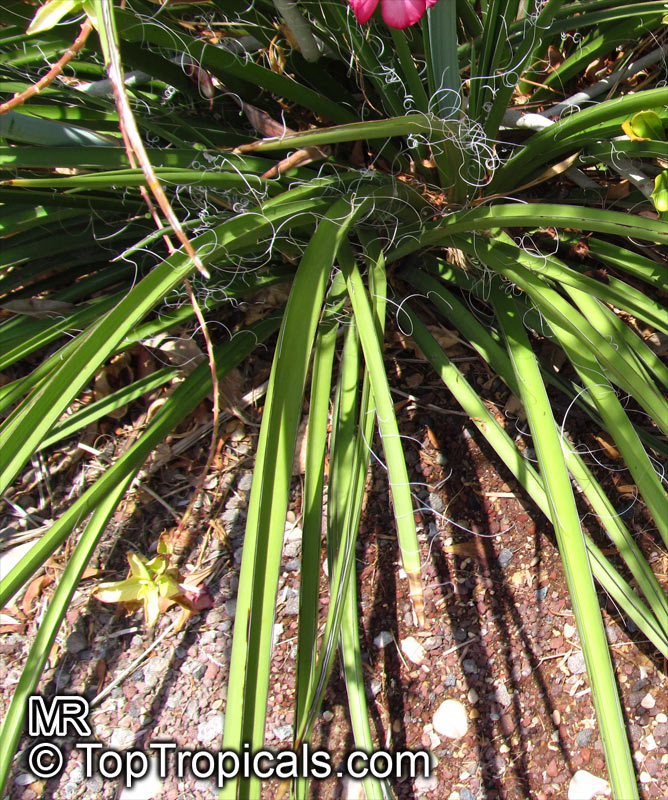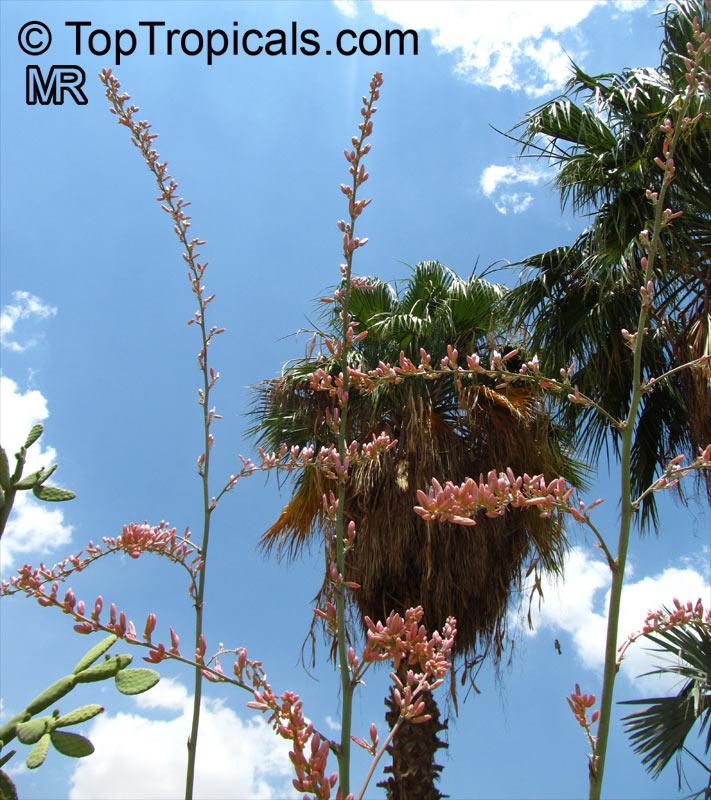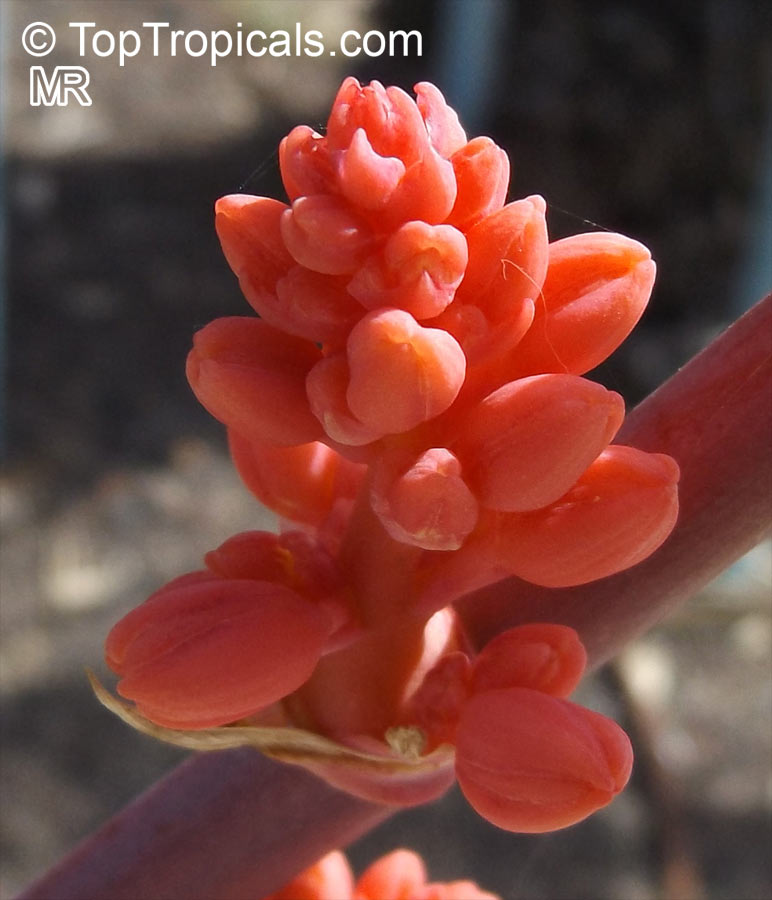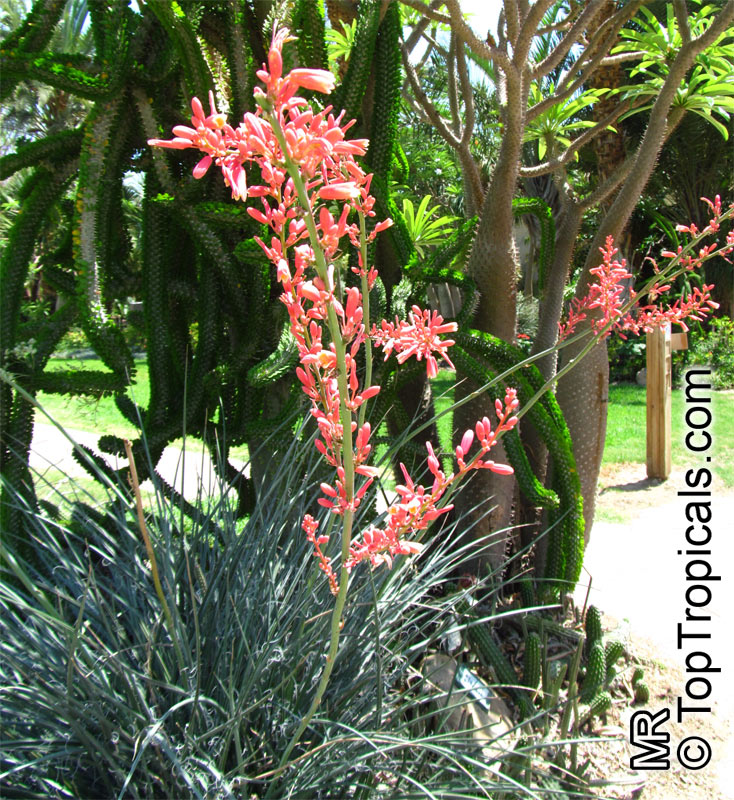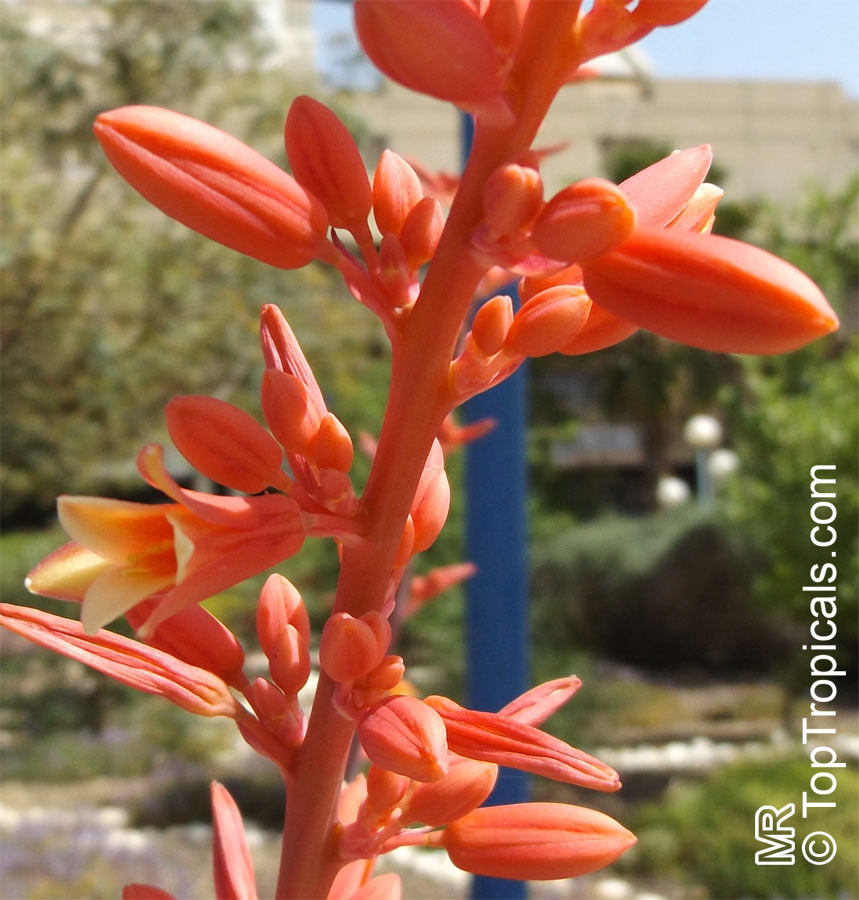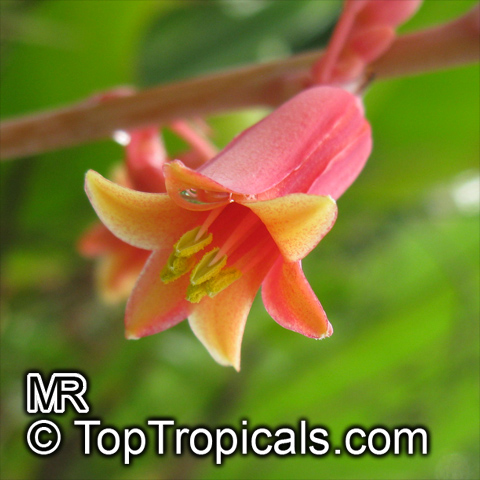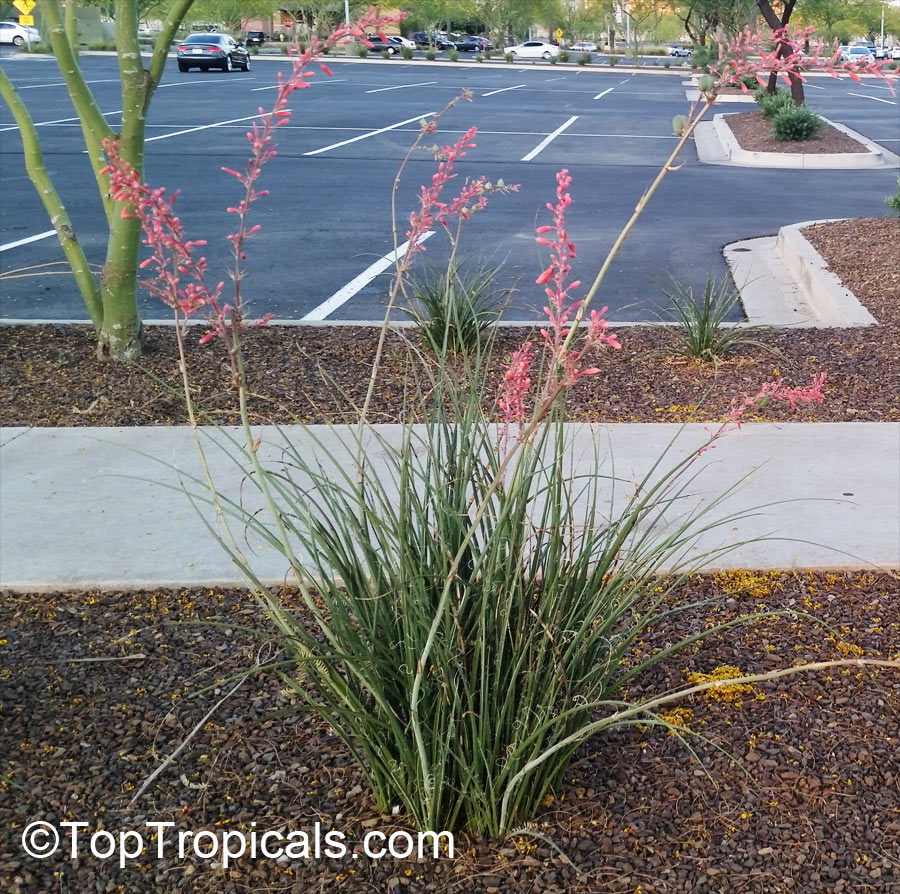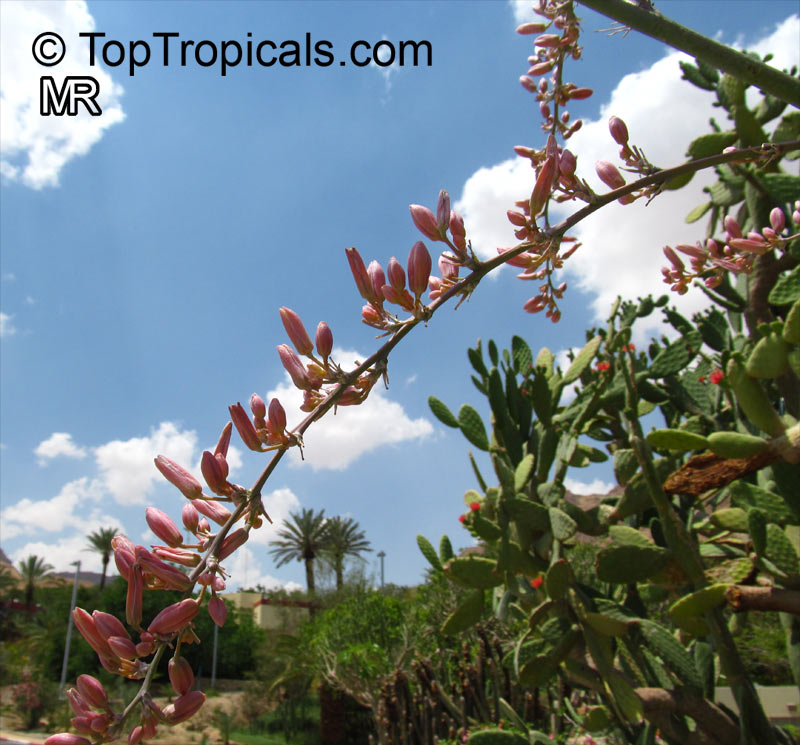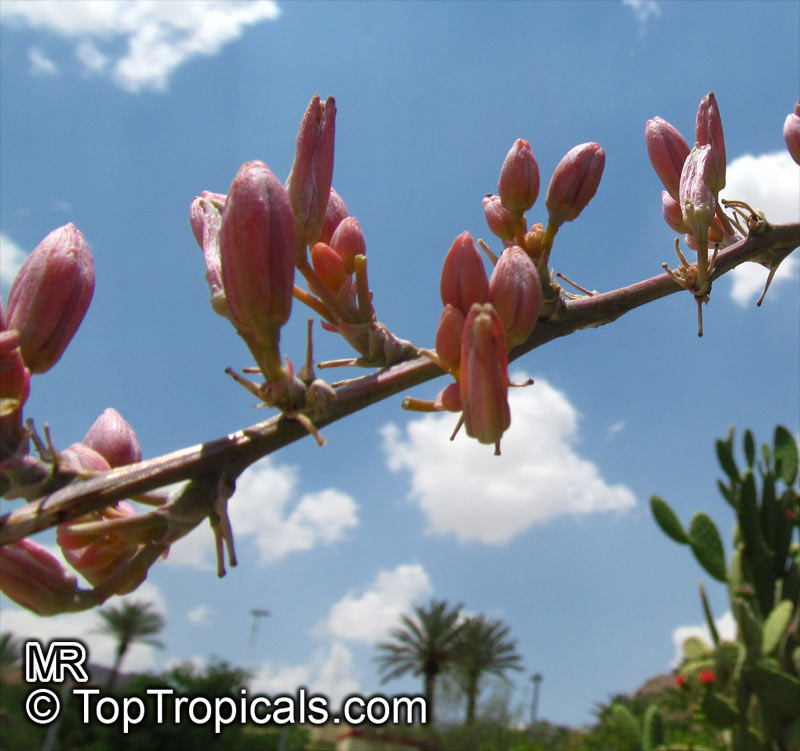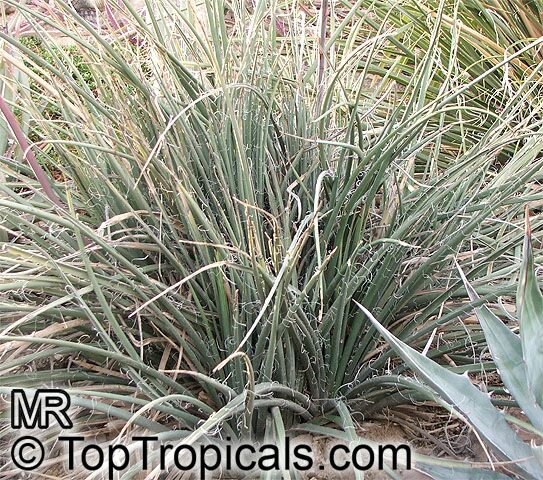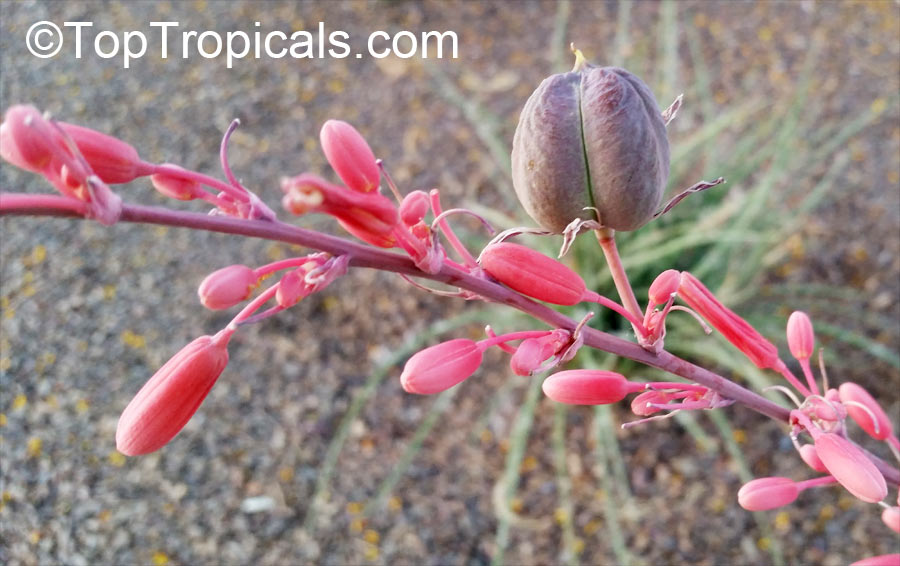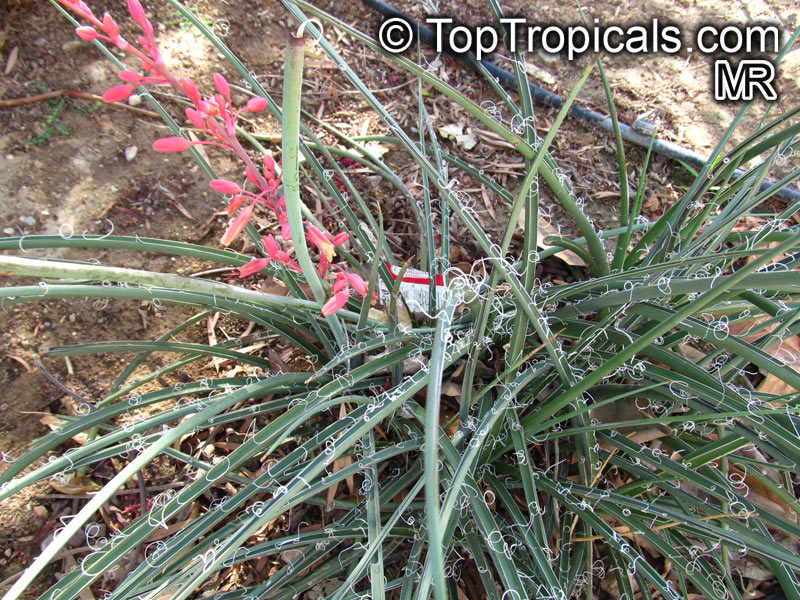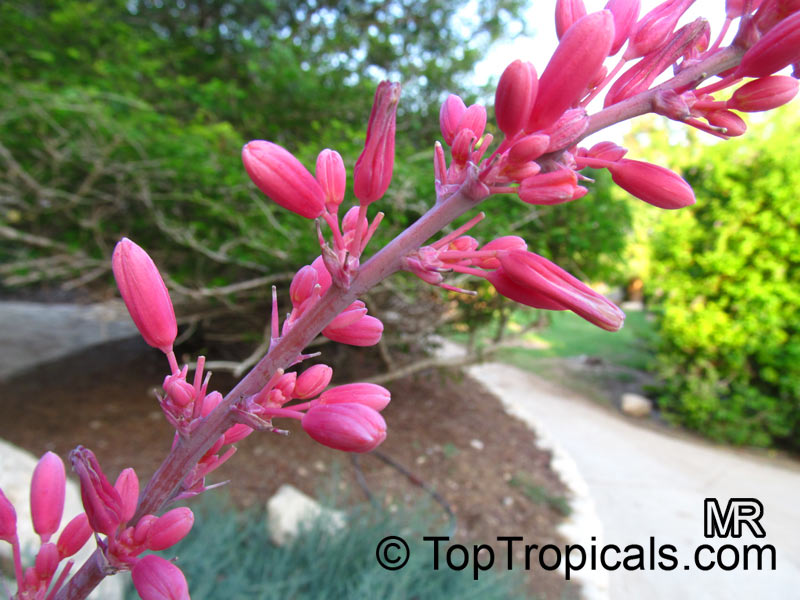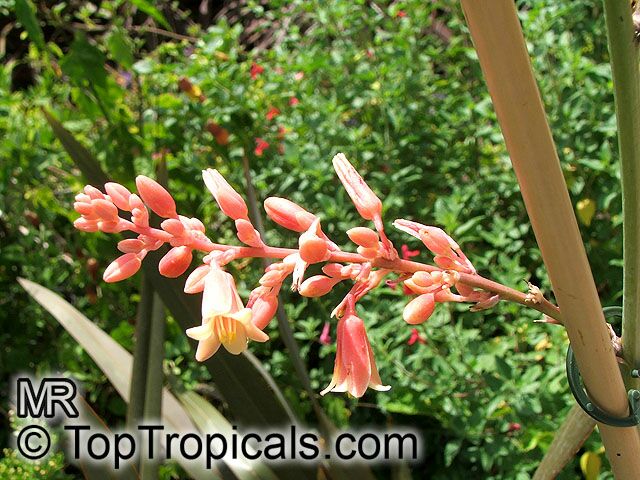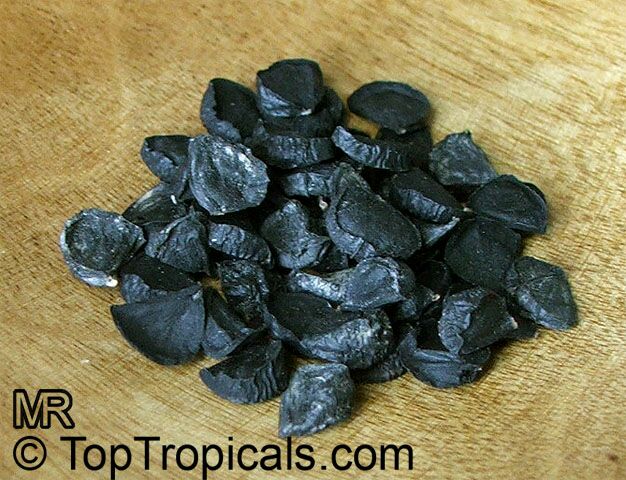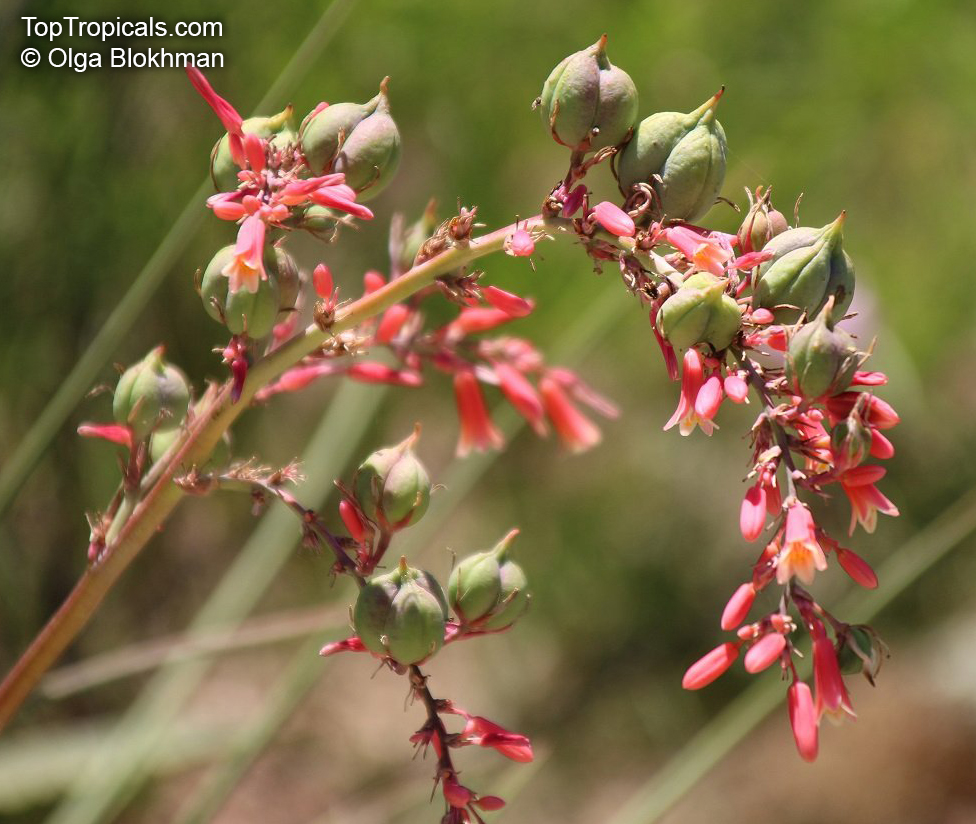Pictogram Guide · Mouse over pictogram for definition
Hesperaloe parviflora
Red YuccaFamily: Asparagaceae (Formerly:Agavaceae / Amaryllidaceae)
Subfamily: Agavoideae
Origin: Mexico, Texas










This small, evergreen plant native to Mexico and Texas and is perfect for those looking to adorn their desert landscape with beauty. Reaching anywhere from two to five feet, the Hesperaloe parviflora (Red Yucca) thrives in full sun and favorable conditions, including moderate water and dry climates. The profusion of blossoms comes in a variety of shades, such as pink, white, off-white, and red or crimson and vinous. What's more, the Red Yucca is a great way to attract butterflies and hummingbirds to your garden.
The Red Yucca is a hardy plant that loves the sun and dry conditions, making it ideal for the USDA Zone 5-10. Despite its ability to thrive in dry soils, the Red Yucca will benefit from supplemental irrigation during the summer months. The leaves of this species come in symmetrical, arched blades which have a long, narrow shape, resembling rolled grass. Additionally, along the margins of the leaves, there are long, curly threads.
The noticeable blossoms of Red Yucca are an inverted bell shape, which are held up on tall, thin stalks. These stalks can reach up to eight feet tall on mature plants, and the flowers measure to be one and a quarter inches long. As for the flowers, they come in a range of shades, including those mentioned before - pink, white and red. They flower quite prolifically in the early summer and can stay in bloom until fall. When the flowers die away, they get replaced with distinctive, ping-pong ball sized capsules. Inside each capsule are flat black-seeds.
For those living in a colder region, the Red Yucca can be grown successfully in a pot, so long as it is placed in a sunny spot, kept warm during the winter months, given supplemental watering, and the soil is well draining. Just be sure that the pot is a minimum of 36 inches wide and deep, and it will need to be repotted every two to three years. The Red Yucca is also best paired with other plants that can tolerate similar conditions, such as Agave, Cacti, and Aloe.
This low maintenance and attractive plant is a selection that is sure to bring life to any desert landscape. With its bright blossoms and distinctive foliage, the Hesperaloe parviflora (Red Yucca) is an ideal choice for the avid gardener.
Similar plants:
